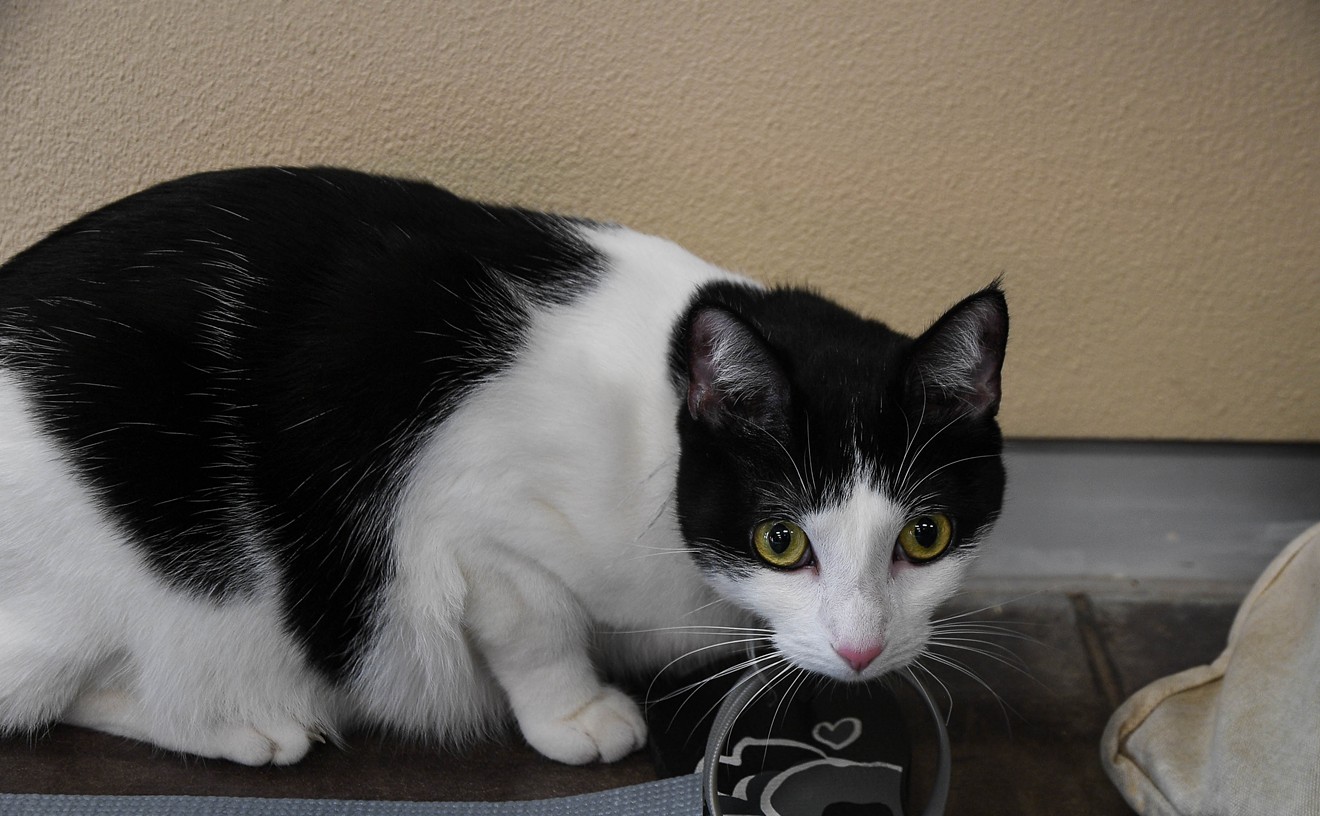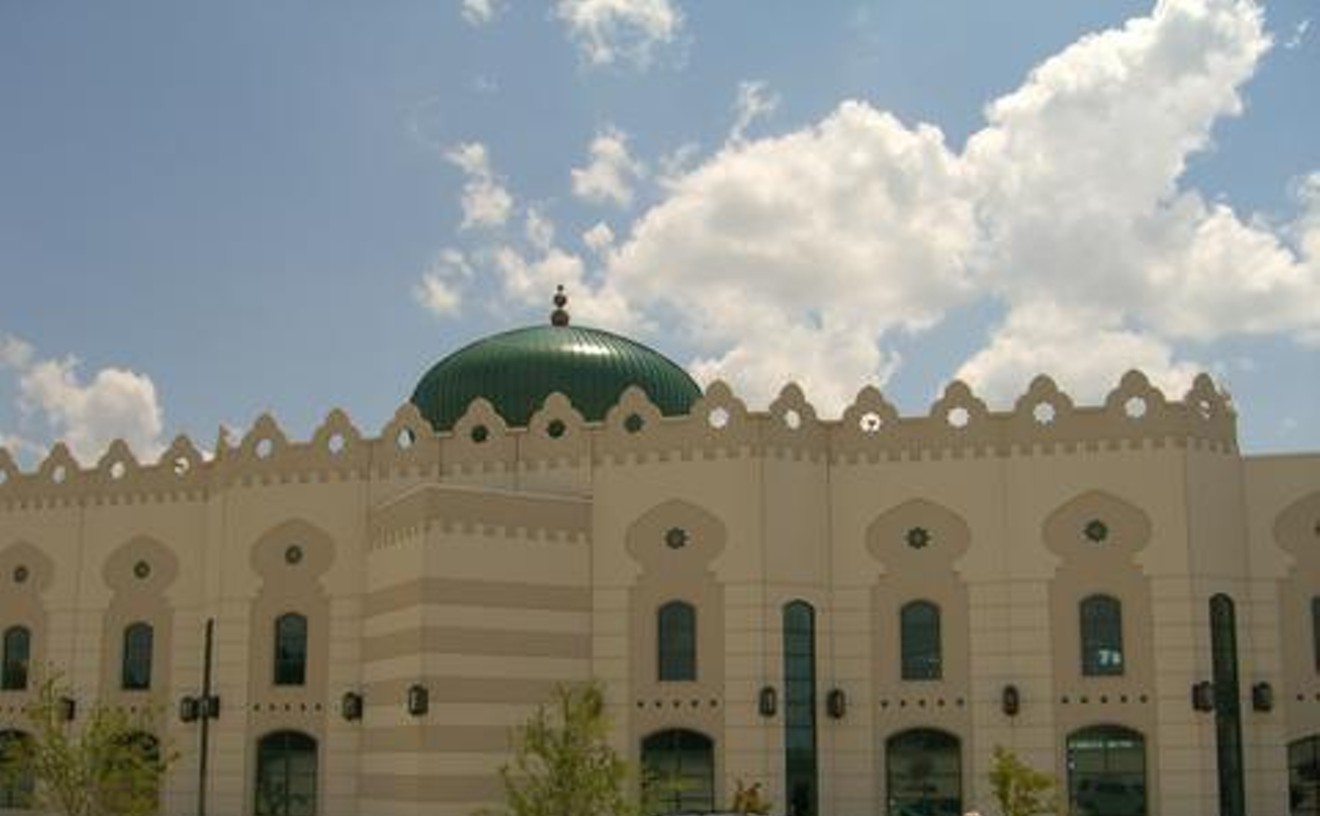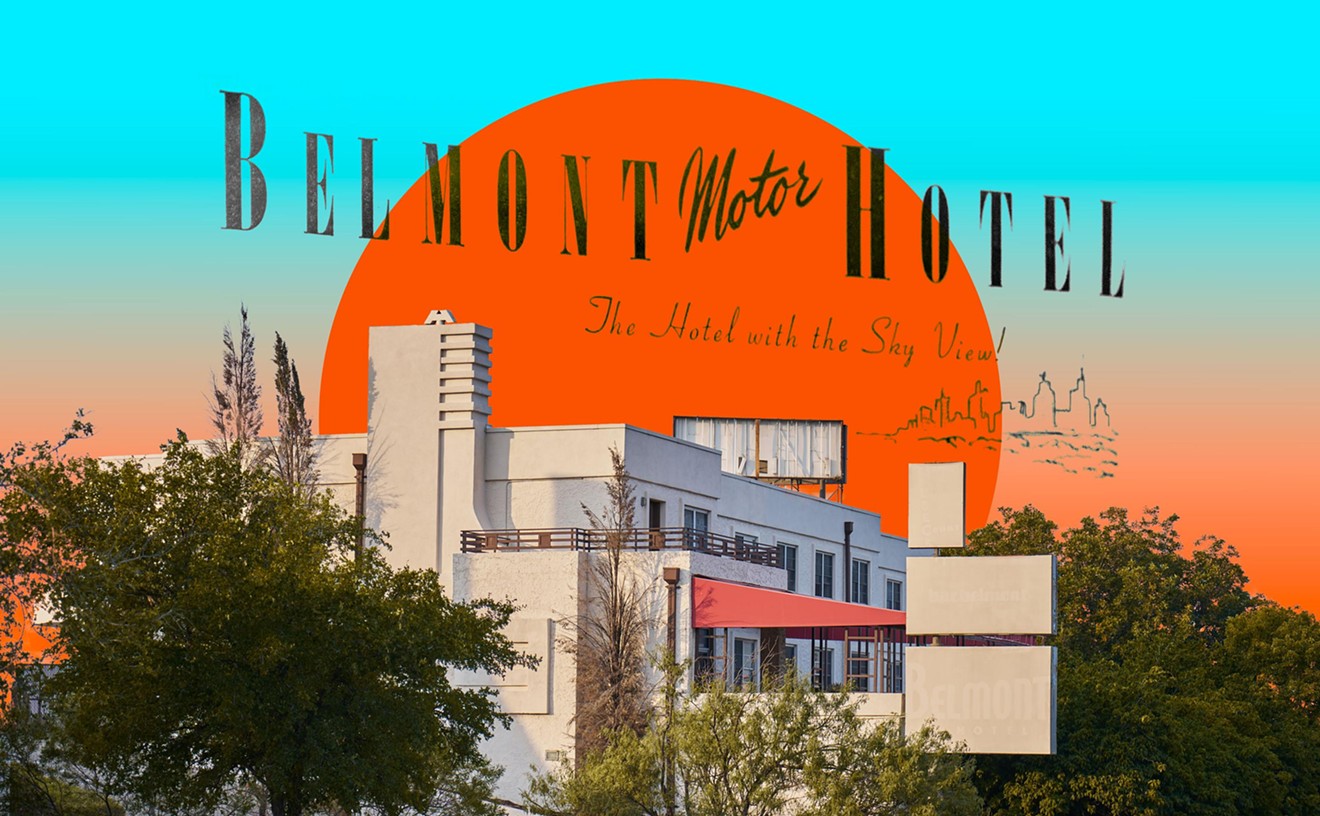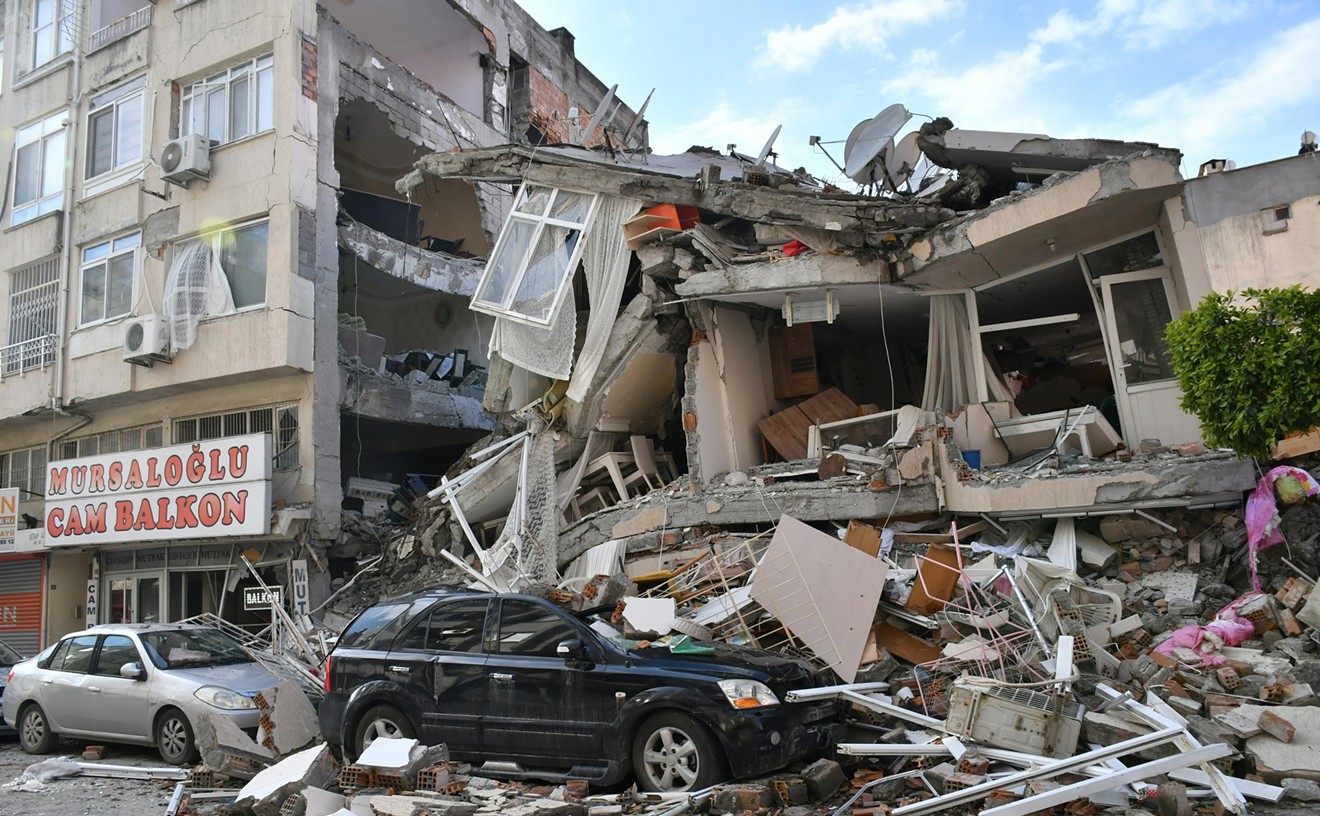Like a lone rider on the horizon, a moment is arriving — right here, right now — when we might be able to do something truly revolutionary and life-changing for the city along the Trinity River. This grand opportunity will be easy to miss, however, because it is riding into view on the back of a bad donkey.
The pressure is on right now for the city to tear out, blow up, vaporize, expunge or otherwise rid itself somehow of the $4 million-plus blooper it built in the Trinity River five years ago under the name “Standing Wave” or “White Water Feature” — a fake concrete thing for kayakers.
We’ve talked about this before. The Stupid White Water Feature, or SWWF as I call it, is a series of dam-like obstacles that were supposed to create a fun white-water experience for kayakers on one side of the river while allowing canoes and small fishing boats to pass safely up and down on the other side of the river.
But the so-called safe passage on the other side, now called “The Cuisinart” by paddlers, after a popular kitchen shredder-chewer-upper machine, turned out to be so dangerous the city had to warn people not to use it any more.
The story I’m hearing back-channel is that the U.S. Army Corps of Engineers is making it pretty plain they think the only viable way to restore navigation on the river, as required by federal law, will be to get the SWWF out of there; a solid majority of the Park Board want it gone; and the City Council is split.
Those on the council who want to keep it may see doing so mainly as face-saving for former Dallas City Manager Mary Suhm and the rich Park Cities ladies who talked her into building it in the first place. But any plan to keep it will necessarily entail fixing it, and the Corps is telling the city the only way to fix it will be to build something three times the size of what’s already there.
The city has pumped over $4 million into the mess they’ve got already. So what does something three times its size cost? $12 million?
And here is the opportunity. What if the public, acting through its elected representatives, said, “No?” Hmm.
“Don’t do that. Stop. Do not make the SWWF three times bigger. In fact, we don’t remember ever telling you to build a SWWF in the first place. In fact, we don’t remember telling you anything at all about what we want along the Trinity River, because we don’t remember you ever asking us. So stop. Step back. Put the river down now. And then let’s think."
Let’s do think. I mean you. Me. All of us. What would we come up with if we brought together some kind of community-wide consensus process to agree on what we want down there?
By the way, that’s what we did and what we had – a consensus — before this whole thing turned into a multi-billion-dollar, 20-year, boogered-up boondoggle hijacked from us by the highway trolls. In 1996, under the leadership of then City Councilman Larry Duncan, a public consensus-seeking body called the Trinity River Corridor Citizens Committee came up with a plan for a grand park along the river downtown. In the 1998 bond election to fund the plan, we voters were told we were voting on that plan.
As soon as the votes were tallied authorizing the money, then-Mayor Ron Kirk stiff-armed Duncan, took control away from the public committee and turned everything over to a handful of small private nonprofits that control the project to this day. Their entire mission since then has been to stave off and defeat any real overarching concept for the vast stretches of fallow land between the flood control levees downtown, because they want to keep that space available for the unneeded multi-lane, high-speed expressway that has been their agenda from the beginning.
It’s a head fake. They keep offering us small, stupid stuff, I guess, because they think we’re small, stupid people. It’s always some cheesy, bread-and-circus, country carnival midway crap – a Ferris wheel at one point, the infamously absurd “juggler under the overpass” plan for turning freeway ramps into playgrounds (only a good idea if you have extra kids) and, yes, the SWWF, only a good idea if you have nine lives. No, wait. I can still of think of nine better things to do with mine.
I don’t think the compulsion among some on the City Council right now to keep the SWWF is merely about saving face. Somebody is smart enough to know what happens if that thing gets blown up, and they are determined not to let it happen.
What happens is this: We small, stupid people say, “Say what again? You what? You spent $4 million on a kayak ride in the river, and now you’ve got to spend X many more million tearing it out?”
I think here’s where the thought process goes from there. And this is what I mean about the golden opportunity. If you and I and all of us start thinking about it, what’s one of the first things we’re going to wonder?
Why do they want to put these multi-million-dollar contraptions down there that are going to be used by about 25 people, when they know that every time the Trinity River floods all of that stuff is going to be covered in 2 feet of silt?
Why not convene another consensus process, put former council member Angela Hunt in charge of it because she’s got a brain in her head, and let us pick and choose the things we’d like to see along the river? And by the way, most of those are probably going to be relatively low impact, low cost and low maintenance, because, among other things, we are the ones who will be picking up the tab for upkeep.
Therefore maybe we’d like to see things developed along the river that are easy to clean up after a flood, like nature trails, soccer fields, community gardens, wildflower meadows, hot air balloon launching sites, whatever, as long as it’s simple and easy to keep up.
Oh, yeah, and natural. How about natural? If we want to go to an amusement park, we can go to an amusement park. What we can’t get to very easily in Dallas is green-serene space. So how about keeping as much of it as possible green and serene? Three things are good about green and serene. 1) Green 2) Serene 3) Cheap.
To the Park Cities ladies who brought back the idea for the SWWF from one of their vacations, we would say that we’re sorry to be so cheap, but we don’t have as much money as they do. That’s why they call us, “The Public.” Not many people in the public are that rich.
Here’s another question: If the things we might wind up wanting to see down there are low impact, and if what the other side really wants to do is keep the space open for a highway, why wouldn’t they like our ideas? When time comes to build the highway, soccer fields and community gardens could be scraped out of the way in one good day’s work with a tractor.
I don’t really know the answer. The most paranoid explanation (and therefore the one I like best) would be about ownership of the space. The highway trolls and their handmaidens in the private foundations may seek to use the juggler under the overpass and the SWWF to distract us but also to prevent us from getting the idea we own that land out there. We start hanging out all over that space, kicking balls and planting things, next thing you know we may get the idea it’s public and we have a right to all of it. You know how we publics can be sometimes, especially when drink is involved.
But maybe that’s not it. Maybe that gives them too much credit for cunning. It may be that the people who want us to spend another $12 million or whatever keeping the SWWF alive just really like that kind of stuff. It’s like the fake suspension bridges they have caused to be built over the river. They like things fancy.
Fancy is not against the law. Listen, every morning I point my finger at myself in the mirror, I look real serious, and I say, “Jim, this is America. So watch it.”
The rich people have a right to want the river to look the way they want it to look. They have been given wonderful opportunities to do just that. The fancy suspension bridges are a good example. The turning of the entire park over to the private foundations is another good example. The deep-sixing of the public coalition under Larry Duncan is an excellent example.
But remember. The most recent example is the SWWF, and maybe what the SWWF tells us is that they’ve had enough opportunities. Maybe this is the opportune moment I’m talking about where we step back in and tell everybody we’ve got some examples of our own.
Council members Philip Kingston and Scott Griggs have said repeatedly that we need to take the design of the Trinity River park or parks or whatever it’s going to be back to zero and start over. We need to reconvene the public process that was cut off by Mayor Kirk 20 years ago and think this whole thing through again.
Somebody is already worried, I’m sure, that we’re going to start thinking along these lines if they admit the SWWF was an idiotic mistake that needs to be undone. That may be the real reason they don’t want to undo it. But the sheer stupidity of keeping it is just what we needed — the example that proves we need to take our river back and do something real with it.
[
{
"name": "Air - MediumRectangle - Inline Content - Mobile Display Size",
"component": "18855504",
"insertPoint": "2",
"requiredCountToDisplay": "2",
"watchElement": ".fdn-content-body",
"astAdList": [
{
"adType": "rectangle",
"displayTargets": "mobile"
}
]
},{
"name": "Editor Picks",
"component": "17105533",
"insertPoint": "4",
"requiredCountToDisplay": "1",
"watchElement": ".fdn-content-body",
"astAdList": [
{
"adType": "rectangle",
"displayTargets": "desktop|tablet"
},{
"adType": "rectangle",
"displayTargets": "desktop|tablet|mobile"
}
]
},{
"name": "Inline Links",
"component": "18349797",
"insertPoint": "8th",
"startingPoint": 8,
"requiredCountToDisplay": "7",
"maxInsertions": 25
},{
"name": "Air - MediumRectangle - Combo - Inline Content",
"component": "17105532",
"insertPoint": "8th",
"startingPoint": 8,
"requiredCountToDisplay": "7",
"maxInsertions": 25,
"watchElement": ".fdn-content-body",
"astAdList": [
{
"adType": "rectangle",
"displayTargets": "desktop|tablet"
},{
"adType": "rectangle",
"displayTargets": "desktop|tablet|mobile"
}
]
},{
"name": "Inline Links",
"component": "18349797",
"insertPoint": "8th",
"startingPoint": 12,
"requiredCountToDisplay": "11",
"maxInsertions": 25
},{
"name": "Air - Leaderboard Tower - Combo - Inline Content",
"component": "17105535",
"insertPoint": "8th",
"startingPoint": 12,
"requiredCountToDisplay": "11",
"maxInsertions": 25,
"watchElement": ".fdn-content-body",
"astAdList": [
{
"adType": "leaderboardInlineContent",
"displayTargets": "desktop|tablet"
},{
"adType": "tower",
"displayTargets": "mobile"
}
]
}
]











